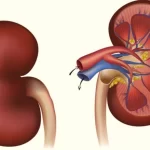How is Hemodialysis done?
Hemodialysis is performed under the supervision of a doctor, nurse, and dialysis technician in hospitals or during a dialysis center. With the assistance of a pump located inside a hemodialysis machine, 250-300 ml of water is injected into the body. Artificial kidneys are sent to purify the blood every minute. to stop blood clots, a drug called heparin is employed.
The artificial kidney works between the patient and therefore the hemodialysis machine to purify the blood. Hemodialysis doesn’t go inside the machine for blood purification. Blood purification within the hemodialyzer is completed with the assistance of a special sort of dialysate delivered by the dialyzer. The purified blood is again transported to the body.
Hemodialysis deadline
Generally, the method of hemodialysis lasts for four hours, in the meantime, the entire blood of the body is purified about 12 times. within the process of hemodialysis, the necessity for transfusion is usually wrong, the idea is wrong. Yes, if the quantity of hemoglobin within the blood has decreased, then in such a situation, blood is given as long as the doctor finds it necessary. Hemodialysis is typically done three days every week and every session is about four hours. Hemodialysis may be a blood purification procedure performed with the assistance of a dialyzer.
How is blood taken out of the body for purification?
The following are the most methods used for vascular access.
- Double lumen catheter
- A.V. Fistula
- Graft
Double lumen catheter
- This is the foremost common method for immediate hemodialysis for the primary time in accidental situations, during which catheters are often performed immediately by inserting into a thick vein (vein).
- This method of dialysis has been considered ideal for short-term use by a tube inserted from outside the body for dialysis. This catheter is placed during a thick vein (internal jugular subclavian or femoral vein) located within the throat, shoulder, or thigh, with the assistance of 300 to 400 minutes every minute. Ltd. Blood is extracted for purification.
- This catheter (tube) is split into two tubes within the outer part. One a part of the tube is to empty the blood of the body and therefore the other to send the blood back. Before going inside the body, both parts of the tube become one, which is split into two parts from inside.
- This method is preferred for short-term (3–6 weeks) hemodialysis due to the danger of catheter infection. There are two sorts of Venus catheters for dialysis and nozzles. The tubular catheter is usable for one month and non-tubular are often used for a couple of weeks.
A.V. Arterio Venous Fistula:
Long term This method is best used for hemodialysis for months and years because it’s safe. during this method, the artery and vein at the wrist are joined by the operation. The blood coming from the artery with a high amount of pressure goes into the vein, causing the veins of the arm to swell.
In this way, it takes three to four weeks for the veins to swell. Only then can the veins be used for hemodialysis. Therefore, for the primary time, immediate hemodialysis can’t be wont to make instant fibula. In these puffed veins, two special sorts of thick needle-Fistula Needle is inserted at two different places.
With the assistance of this Fischula needle, blood is taken out for hemodialysis and after being purified, it’s transported inside the body. Hemodialysis is often finished months or years with the assistance of Fistula. All light daily tasks are often through with a hand-held fibula.
Why is special care of Fistula necessary?
In the treatment of the last stage of chronic renal failure, the patient has got to undergo hemodialysis. The lives of such patients are supported by regular dialysis. A.V. as long as Fischula works properly, enough blood is often taken from it for hemodialysis. In short, the lives of patients with dialysis are av. it’s supported the qualified functionality of Fistula.
A.V. The inflamed veins of the Fistula cause large amounts of blood to flow with greater pressure. If the av. there’s also an opportunity of excessive bleeding from the swollen veins if a sudden injury occurs within the Fistula. If the blood flow can’t be controlled immediately in such a situation, then the patient can also die during a short period.
What precautions are necessary for the satisfactory use of Fistula?
A. With the assistance of V. Fischula, for an extended time (years) to urge blood for a sufficient amount of dialysis, it’s necessary to stay the subsequent points in mind. Workout regularly. After making the fibula, the vein is swollen and it’s necessary to perform a hand workout routine to urge sufficient blood from it. Even after starting hemodialysis with the assistance of Fischula, it’s vital to try to hand exercises regularly.
Lack of vital signs
A decrease in vital signs can have a significant impact on the functionality of the fibula, causing fear of closure of the fibula. Therefore, there shouldn’t be any decrease in vital signs. Every patient should be checked regularly 3 times each day (morning, afternoon, and night) after the Fischula to ascertain if the Fischula is functioning properly.
If Fischula suddenly stops working by taking such precautions, it is often diagnosed immediately. Early diagnosis and appropriate treatment make the Fissula work again. Hemodialysis patients with A.V. it’s important to require care because Fischula may be a lifesaver.
Do not take too much hand pressure
Never be injected into the vein of a hand-drawn fibula. Glucose or blood therein vein shouldn’t tend or blood shouldn’t tend for testing. Blood pressure shouldn’t be measured on the hands that perform a fibula. Weighing things shouldn’t be carried by hand with a fistula. Also, care should be taken to not put an excessive amount of pressure thereon hand. Especially, it’s important to require care of the pressure on your hands while sleeping.
Don’t use jewelry that can put pressure
It is important to require care that Fischula doesn’t suffer any quite injury. The hand, jewel (hard, metal, bangles), etc. Which may put pressure on the hand, shouldn’t be worn. If for a few reasons accidentally injures the fibula and start bleeding, the blood should be stopped from being pressurized with the opposite hand without fear. Bleeding is often effectively prevented by tightly tying the bandage used after hemodialysis. then, contact the doctor immediately. Getting to the doctor no end the bleeding also can be fatal.
Fistula hands should be kept clean and hands should be cleaned with bactericidal soap before undergoing hemodialysis. After hemodialysis, a special bandage (Tourniquet) is tightly tied to stop bleeding from the fistula. If this bandage is tied for an extended time, then there’s a fear of closure of the fistula. Hemodialysis machine purifies the blood with the assistance of artificial kidneys and maintains appropriate amounts of water, alkalis, acids.
Graft:
The graft is employed for patients whose hand veins aren’t eligible for Fistula. During this method, with the assistance of a man-made vein made from a special sort of plastic-like substance, the operation is completed to attach the thick artery and vein of the hands or feet.
The process of taking and repatriating blood for hemodialysis is completed by inserting the Fischula needle into the graft. Being very expensive, this method is employed in only a few patients. a. Grafts have a better risk of clotting and infection than V. fistula. And A. V. The graft might not work for an extended time.
The following are the most functions of the hemodialysis machine.
Hemodialysis machine pump works by taking blood from the body for purification of blood and increasing or decreasing its quantity as needed. This machine produces a special type of fluid (dialysate) and sends it to a synthetic kidney, and the machine maintains the temperature of dialysate, alkali, bicarbonate, etc. in suitable quantities.
The machine sends this dialysate to the synthetic kidney at an inexpensive pressure and after removing unnecessary waste from the blood, removes the dialysate. There is no pain in hemodialysis and therefore the patient can do normal work while lying in bed or sitting during a chair. renal failure occurs thanks to the buildup of excess water within the body. within the process of dialysis, the machine removes excess body water.
The dialyzer carries a spread of safety devices and alarms to guard patients. for instance, various parameters and various alarms are displayed on a computerized screen on a hemodialysis machine to detect bleeding from the dialyzer or to detect the presence of air within the blood circuit. In addition to monitoring the dialysis, the machine’s performance provides a spread of alarm features, accuracy, and security.
What is the composition of a dialyzer (artificial kidney)?
In the process of hemodialysis, the dialyzer (artificial kidney) may be a filter where blood purification occurs. The dialyzer is formed of a transparent plastic pipe of about 8 inches long and 1.5 inches in diameter, with thin tubes like 10,000 hairs. These tubes are thin but hollow inside. These tubes are made from a special quite plastic transparent membrane (Semi-Permeable Membrane). Blood flows from inside these thin tubes and purifies.
In the top and bottom parts of the dialyzer, these thin tubes collect and become an outsized tube, through which blood tubing, which brings blood and levitation from the body, is added. The sides of the upper and lower parts of the dialyzer have thick drains connected to the side, allowing the dialysate that flows through the machine to travel in and exit.
Blood purification within the dialyzer (artificial kidney):
The blood that comes from the body for purification goes from one end of the synthetic kidney into thousands of thin tubes. within the hemodialyzer, the dialysate fluid that comes with pressure from the opposite side is distributed round the thin tubes for purification of blood. within the dialyzer, the blood flows from the highest to rock bottom and therefore the dialysate fluid from above to the other side simultaneously.
About 300 min per minute of Ltd. Blood and 600 min. Ltd. The dialysis solution flows continuously within the other way within the dialyzer. The transparent membrane of the hollow fiber that separates the blood and dialysate fluid is faraway from the blood by removing waste products and excess fluid from the blood and pouring it into the dialysate compartment.
In this activity, the skinny tubes made from Semi-Permeable Membrane are released into the blood by emitting substances like creatinine, urea, into the dialysate. during this way, impure blood coming from one end of the synthetic kidney comes out from the opposite end, then it’s clean, pure blood.
In the process of dialysis, the whole blood of the body is purified about twelve times. After four hours of dialysis, the body’s blood gets purified thanks to a big decrease within the amount of creatinine and urea within the blood.
What is the dialysate of the actual sort of fluid with which blood is purified in hemodialysis?
A special sort of highly alkaline (hemoconcentration) for hemodialysis is found during a ten-liter plastic jar. The composition of dialysate fluid is analogous thereto of normal external fluid. But its structure is often modified counting on the necessity of the patient. Hemodialysis machine combines one part of this hemoconcentration and 34 parts of pure water to form dialysate.
Hemodialysis machine keeps the quantity of alkali and bicarbonate of dialyzate adequate to the quantity required by the body. Dialysate may be a special liquid solution that’s commercially available. It consists of electrolytes, minerals, and bicarbonate. The water wont to make dialyzate is alkali-free and pure, especially R. O Plant (Reverse Osmosis Plant Water Purification Device) is formed.
This r. Water, sand filter, coal filter, microfilter deionizer, R. O member and U. Through the filter (Ultra Violet), it becomes saline, pure, and completely sterilized. to guard the patients against the danger of pollution present within the water, it’s necessary to concentrate on the purification of the water also as its quality. About 150 liters of water are employed during each hemodialysis session. Purification of blood and removal of excess water is completed within the dialyzer.
Where is Hemodialysis done?
Hemodialysis is typically done by the expert staff of the hospital as per the recommendation and supervision of the nephrologist. a really small number of patients buy hemodialysis machines, receive training and perform hemodialysis reception with the assistance of relations. this sort of dialysis is named home hemodialysis. this needs money, training, and time.
Is Hemodialysis a painful and sophisticated treatment?
No, hemodialysis may be a simple and painless action. Minor pain could also be experienced at the start of dialysis when plastic blood vessels enter the patient’s veins by the needle. Patients who need dialysis for an extended period of your time only come to the hospital to undergo hemodialysis and that they head home as soon because the hemodialysis procedure is complete.
Most patients spend four hours sleeping, resting, watching TV, taking note of music, or reading their favorite books during this procedure. Many patients like better to have light Nasta, tea, or cold drinks during this procedure.
What are the common problems during dialysis?
Reduced vital signs, leg pain in discomfort during dialysis. Feeling weakness, vomiting, nausea, nausea, etc. Before starting dialysis, check the quantity of the body beforehand so that adverse events are often avoided. Weight gain, serum electrolytes, and hemoglobin sessions should be monitored between one to a different dialysis session.
Advantages of Hemodialysis
- Treatment of dialysis at a low cost.
- Hemodialysis is safe due to the hospital staff and specialist staff.
- More effective treatment in less time.
- Hemodialysis may be a simple, painless, and effective treatment.
- The chance of infection is extremely rare.
- There is no got to roll in the hay daily.
- In some cases, there are some remedies to scale back pain, like using anesthesia rather than injecting.
- Mental stress is reduced by visits and discussions with other patients.
Disadvantages of hemodialysis
- Due to this facility not being available in every city/village, one has got to face the difficulty of going out again and again.
- One has got to attend the hospital for treatment and cling to the deadline.
- It is painful to use the fistula needle whenever.
- There is an opportunity for infection of hepatitis.
- Food has got to be avoided.
- It is very expensive to start a Hemodialysis Unit and it requires specialist staff and doctors to run it.
Important Information for Hemodialysis Patients
Regular hemodialysis is important for an extended healthy life. it’s harmful to the body to stay irregular or change it. Along with the treatment of hemodialysis, the patient is required to require medication regularly and control vital signs and diabetes.
Following proper dietary restrictions
Hemodialysis patients should follow appropriate restrictions on their diet. the quantity of fluid, salt, potassium, and phosphorus is banned. the quantity of protein should be selected for the recommendation of a physician or kidney specialist. Ideally, the load gain between the 2 dialyzes should be up to 2 – 3 kilograms.
Malnutrition is usually found in patients with hemodialysis, which affects the result of therapy. additionally, to the doctor, the assistance of a dietitian should be taken which is useful in maintaining sufficient calories and protein intake.
Vitamins B and C
The main advantage of Hemodialysis is safety, simpler, and fewer expenses. Hemodialysis patients may have to take additional amounts of vitamins B and C. One should avoid eating multivitamin tablets from the medical store itself. it’s going to not contain enough of the required vitamins. they’ll also contain vitamins that c. could also be harmful to patients with D.
like vitamins A and K. Calcium and vitamin D . can complement one another and it depends on the blood session of calcium, phosphorus, and parathormone. Lifestyle changes are inevitable. Common measures include stopping smoking, maintaining an ideal weight, exercising regularly, and not consuming alcohol within the range.
When should the doctor contact
Hemodialysis patients should immediately contact a technician or doctor who is dialysis if-
- A. B. Visible bleeding from the place of fistula or catheter.
- A. B. Fiscella doesn’t feel the vibration.
- Unexpected weight gain, body swelling, or breathing trouble.
- Chest pain, very slow or fast heartbeat.
- The vital signs could also be uncontrollably high or low.
- Body cramps started thanks to confusion, drowsiness, fainting, or fainting.
- Symptoms like fever, chills, vomiting, vomiting, or very weakness.






